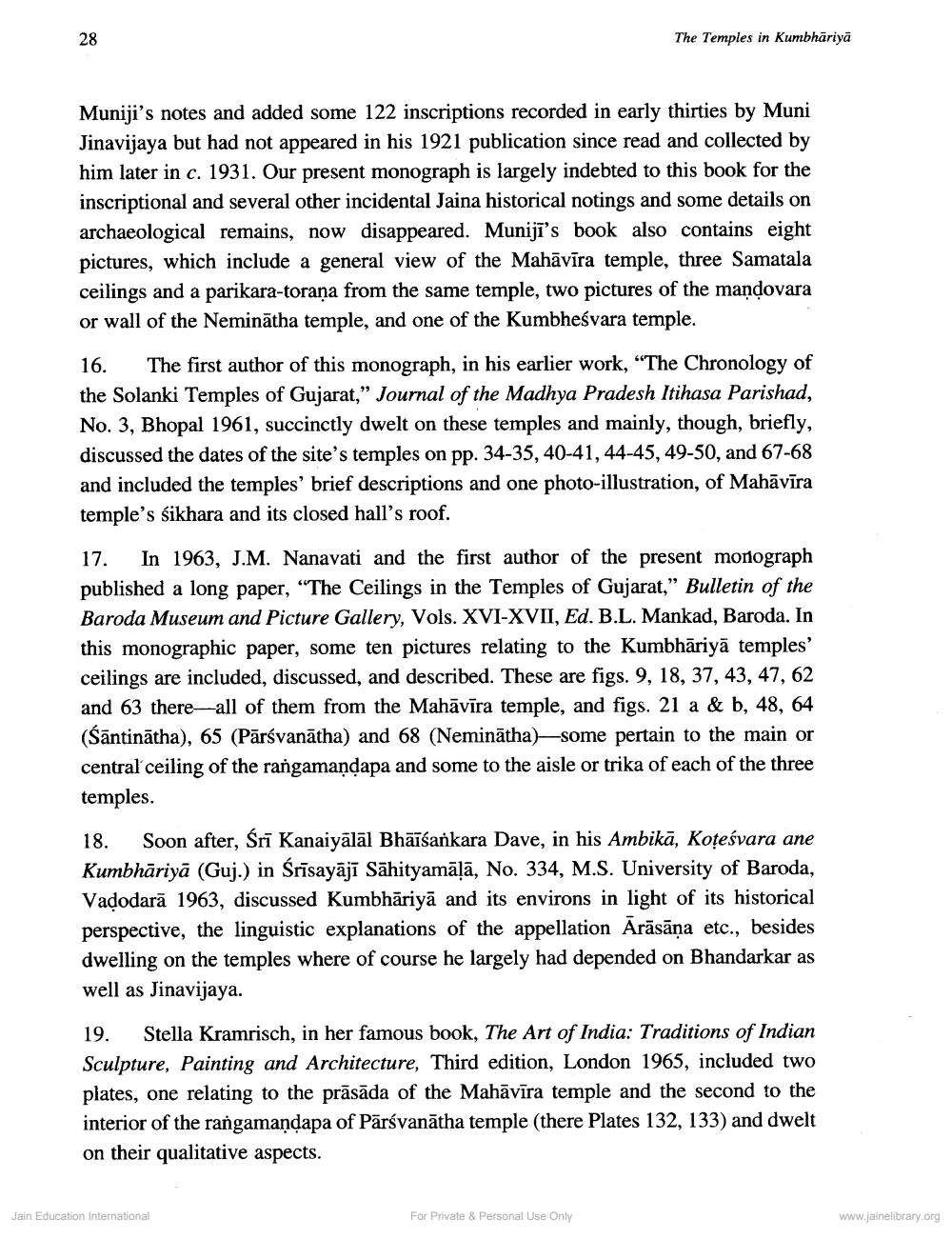________________
The Temples in Kumbhāriya
Muniji's notes and added some 122 inscriptions recorded in early thirties by Muni Jinavijaya but had not appeared in his 1921 publication since read and collected by him later in c. 1931. Our present monograph is largely indebted to this book for the inscriptional and several other incidental Jaina historical notings and some details on archaeological remains, now disappeared. Muniji's book also contains eight pictures, which include a general view of the Mahāvīra temple, three Samatala ceilings and a parikara-toraņa from the same temple, two pictures of the mandovara or wall of the Neminātha temple, and one of the Kumbheśvara temple.
16. The first author of this monograph, in his earlier work, “The Chronology of the Solanki Temples of Gujarat,” Journal of the Madhya Pradesh Itihasa Parishad, No. 3, Bhopal 1961, succinctly dwelt on these temples and mainly, though, briefly, discussed the dates of the site's temples on pp. 34-35, 40-41, 44-45, 49-50, and 67-68 and included the temples' brief descriptions and one photo-illustration, of Mahāvīra temple's śikhara and its closed hall's roof.
17. In 1963, J.M. Nanavati and the first author of the present monograph published a long paper, “The Ceilings in the Temples of Gujarat,” Bulletin of the Baroda Museum and Picture Gallery, Vols. XVI-XVII, Ed. B.L. Mankad, Baroda. In this monographic paper, some ten pictures relating to the Kumbhāriyā temples' ceilings are included, discussed, and described. These are figs. 9, 18, 37, 43, 47, 62 and 63 there-all of them from the Mahāvīra temple, and figs. 21 a & b, 48, 64 (śāntinātha), 65 (Pārsvanātha) and 68 (Neminātha)—some pertain to the main or central' ceiling of the rangamandapa and some to the aisle or trika of each of the three temples.
18. Soon after, Śrī Kanaiyalal Bhāīšankara Dave, in his Ambikā, Koteśvara ane Kumbhāriyā (Guj.) in Srisayājī Sāhityamāļā, No. 334, M.S. University of Baroda, Vadodarā 1963, discussed Kumbhāriyā and its environs in light of its historical perspective, the linguistic explanations of the appellation Arāsāņa etc., besides dwelling on the temples where of course he largely had depended on Bhandarkar as well as Jinavijaya.
19. Stella Kramrisch, in her famous book, The Art of India: Traditions of Indian Sculpture, Painting and Architecture, Third edition, London 1965, included two plates, one relating to the prāsāda of the Mahāvīra temple and the second to the interior of the rangamandapa of Pārsvanātha temple (there Plates 132, 133) and dwelt on their qualitative aspects.
Jain Education International
For Private & Personal Use Only
www.jainelibrary.org




